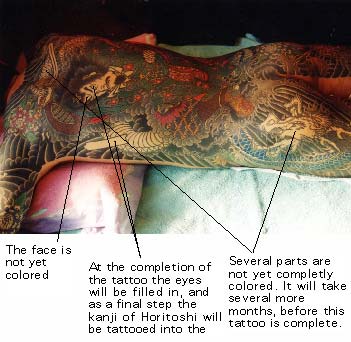FEATURED STORIES
|
Feature Story
Three-Time World Karate Champion Elisa Au America’s First Female World Karate Federation ChampionThree-Time World Karate Champion Elisa Au America’s First Female World Karate Federation Champion A world champion in karate, Elisa A...
|
MOVIES,MUSIC & ENTERTAINMENT
YOSHIKI Cements His Place in Hollywood HistoryYOSHIKI Cements His Place in Hollywood History The First Japanese Star to Cement His Handprints at the TCL Chinese Theatre Japanese legend...
|
Movie, Music & Entertainment
Japanese Music Fans Discover Jagwar TwinJapanese Music Fans Discover Jagwar Twin Putting on a Happy Face Roy English, a U.S.-based songwriter, producer, and musician known by his...
|
|
ART & CULTURE
Adachi Gakuen International Art ContestAdachi Gakuen International Art Contest 3rd Street Promenade in Santa Monica, CA In November 2021, the Adachi Gakuen International Art Con...
|
Feature Story
Shohei OhtaniShohei Ohtani Japan’s Gift to America When Shohei Ohtani entered Major League Baseball in 2017, America not only gained a unique and highl...
|
Feature Story
Kyary Pamyu PamyuKyary Pamyu Pamyu The Queen of Kawaii Headlines Coachella U.S. superstar Billie Eilish and Japanese pop star Kyary Pamyu Pamyu simultaneou...
|
|
Travel & Food
Travel to AnaheimTravel to Anaheim Westin Anaheim Resort Located directly across from the Disneyland Resort and adjacent to the Anaheim Convention Center l...
|
Interviews
Sushi KimuraSushi Kimura Tomoo Kimura, the Sushi Chef behind Singapore’s Michelin-starred Restaurant Tomoo Kimura is an acclaimed Japanese sushi chef ...
| |
|
Living Legend
Philip KotlerPhilip Kotler The Father of Marketing Philip Kotler has been hailed as “the world’s top expert on the strategic practice of marketing” by ...
|
Living Legend
Dr. John W. CreswellDr. John W. Creswell World-Renowned Mixed Methods Research Pioneer Research Trailblazer Blazing New Trails in Japan Over the decades, th...
|
Movie, Music & Entertainment
MONDO GROSSOMONDO GROSSO Ready for the Big World Shinichi Osawa is a DJ, musician, composer, and producer who formed the band Mondo Grosso in 1991. Th...
|
TJ EXPERTS
|
ART & CULTURE
Hiroyuki Suzuki Reveals the Beauty of New York’s East Side Access in The Next LevelHiroyuki Suzuki Reveals the Beauty of New York’s East Side Access in The Next Level Photographs Inspiring Beauty within the Bleak Realiti...
|
TJ Expert
Opportunity called “difficulty”Opportunity called “difficulty” By Hiroshi Tasaka A major league baseball player, Ichiro, was having a hard time with a pitcher who ha...
|
Movie, Music & Entertainment
Actor Shin Koyamada The Way of Life Through KarateActor Shin Koyamada The Way of Life Through Karate Shin Koyamada is an actor, producer, martial artist, philanthropist and entrepreneu...
|
|
TRAVEL & FOOD
World-Acclaimed Chef Nobu Matsuhisa Squid Pasta with Light Garlic Sauce RecipeWorld-Acclaimed Chef Nobu Matsuhisa Squid Pasta with Light Garlic Sauce Recipe INGREDIENTS • 4 broccoli florets cut into bite-size...
|
ART & CULTURE
Tokyo Pop and Carrie HamiltonTokyo Pop and Carrie Hamilton Legendary Rock Photographer Bob Gruen in Japan A friend of mine from high school wrote and directed the movi...
|
TJ Expert
I Love DanceI Love Dance At night when dreams come true You can be strong if you have a dream Life is all about sound and dance Costumes that clot...
|
|
TJ Expert
More Travels with TaniMore Travels with Tani In post-occupation Japan, Donald Richie travels with a good friend to Sado, the land of exile. May 2, 1955. On the...
|
TJ Expert
Two StonecuttersTwo Stonecutters Zen Wind from Tasaka Juku One day, a traveler stopped by a town where a new church was being built. There, two stonecu...
|
Living Legends
Pritzker Laureate Shigeru BanPritzker Laureate Shigeru Ban Creating Architecture for Humanity Shigeru Ban is a Japanese architect who graduated from Cooper Union in 19...
|
|
TJ Expert
Chef Morimoto’s Sticky RibsChef Morimoto’s Sticky Ribs Chef Morimoto’s sticky ribs are crispy, tender, salty, and sweet, making them perfect for impressing guests at ...
|
TJ Expert
Nobu Sashimi Salad with Matsuhisa DressingNobu Sashimi Salad with Matsuhisa Dressing Ingredients (serves 4): Sea salt Freshly ground black pepper 7 ounces fresh tuna fillet ...
|
TRAVEL & FOOD
Nagano NostalgiaNagano Nostalgia By Peter Grilli One of the first Japanese novels I read in my youthful forays into modern Japanese literature was Hakai, ...
|
ON JAPAN
|
FASHION & DESIGN
The Current Trend in Japan's Adaptive FashionThe Current Trend in Japan's Adaptive Fashion text by Ai Kishino Japan is widely thought of as a country with a strong public health-...
|
TRENDS & SOCIETY
No Longer Simple Stock Food Japan’s Kanzume CultureNo Longer Simple Stock Food Japan’s Kanzume Culture In Europe, Japan, and the United States, the most popular kanzume, or canned good, i...
|
TRAVEL & FOOD
SAKE vs. WINE The Fundamentals of Food Pairings, Scientifically ExplainedSAKE vs. WINE The Fundamentals of Food Pairings, Scientifically Explained By Toshio Ueno, Sake School of America / Mutual Trading Co., I...
|
|
TRAVEL & FOOD
Yumiko's Home Cooking Takoyaki Recipe (Octopus Balls)Yumiko's Home Cooking Takoyaki Recipe (Octopus Balls) Prep Time : 5 mins | Cook Time : 20 mins | Total Time : 25 mins A famed Osaka s...
|
TRAVEL & FOOD
Konamon, a Tasty Kansai CuisineKonamon, a Tasty Kansai Cuisine text by Miu Fujiwara Konamon has long been a popular food for Osakans. Stemming from the food culture ...
|
TRAVEL & FOOD
Hotels in the Kansai RegionHotels in the Kansai Region with Easy Access to the Kishiwada Danjiri Festival Hotels in and around the city of Kishiwada are very hard to...
|
|
TRAVEL & FOOD
Kishiwada Danjiri MatsuriKishiwada Danjiri Matsuri Recommended by Renowned Fashion Designer Junko Koshino Junko Koshino, whose sisters Hiroko and Michiko are also ...
|
TRAVEL & FOOD
Japan’s Newest & Most Innovative HotelsJapan’s Newest & Most Innovative Hotels – Opened between 2020 and 2021 – While the world was struggling with the spread of COVID-19, numer...
|
ART & CULTURE
Making knots with wishes and spirits in mindMaking knots with wishes and spirits in mind The Art of Mizuhiki There are many theories about the origin of mizuhiki or decorative rice p...
|
|
TRAVEL & FOOD
Yumiko's Home Cooking YAKISOBAYumiko's Home Cooking YAKISOBA JAPANESE STIR FIRED NOODLES Yakisoba (焼きそば) is the Japanese version of stir-fried noodles. Th e noodles ar...
|
TRAVEL & FOOD
A guide to ponzu and its many unique ingredientsA guide to ponzu and its many unique ingredients Ponzu is a vinegar with flavors from different regions Soy sauce and miso are known arou...
|
TRAVEL & FOOD
GASTRONOMIC SAKEGASTRONOMIC SAKE Starting from the early 2000s, America’s interest in the culinary domain has been on a steady rise as the Food Network h...
|
|
On Japan
MacArthur and MeMacArthur and Me I once met United States General of the Army Douglas MacArthur. I had seen him before, from a distance, when he was drivin...
|
On Japan
The Warlord and the WimpThe Warlord and the Wimp In this excerpt from his Japan Journals, Donald Richie learns what separated leaders from losers. ...
|
MOVIES,MUSIC & ENTERTAINMENT
J-flicks in the USAJ-flicks in the USA U.S. Releases of Japan-Related Films ...
|
carved in skin
 |
|
Art can quite literally get under your skin sometimes. Especially when applied under the pressure of up to 36 specially sharpened needles. Dr D. Vice visited the studio of top Japanese tattoo artist Horitoshi, looked into the eye of the needle, pricked up his ears, and finally got the point. Dr D. Vice: When and how did tattooing in Japan get started? Horitoshi: According to the “Gishi-wajin-den” (an ancient Chinese Wei dynasty account of the early Japanese), the people of the Japanese archipelago already used tattooing some 1200 years ago as a means to identify tribes or for religious reasons. The Ainu, the indigenous people of Japan, used tattoos to prevent evil spirits from entering the human body. Traditional Japanese tattoo, the art that I am practicing today, can be traced back about 300 years to the mid-Edo period. Back then, prisoners were being tattooed according to their crimes for easy identification. After their release, these ex-convicts would seek the services of specialists (irezumi-shi) who would tattoo flowers or other patterns over or around the prison marks in order to conceal their past. Over time more complicated patterns evolved, developing into elaborate full-body designs and finally becoming an art form. However, in the old days the ex-convicts as well as their tattooists were generally regarded as outlaws or yakuza. It is only recently, through exchange with western-style tattoo art, that the traditional Japanese tattoo is being recognized as an art form and is slowly shedding its stigma.
|
 |
ddv: Through these western influences getting a tattoo in Japan has become quite fashionable in recent years. Today you can see young kids, even young women, sporting all kinds of tattoos — all part of an ongoing body modification trend . . . |
|
h: Yes, but these are mostly western-style tattoos done by machine that can be done within a few hours. That is completely different from what I am doing. Some of my full-body tattoos take up to five years to complete. ddv: What about firefighters? Don’t they have some kind of tattoo tradition too? ddv: What about the actual technique used in traditional Japanese tattoo?
|
|
|
ddv: Are you passing on your art to others?
|
 |
|
h:My son, Horitoshi II, already operates his own studio. And at present I have about 17 deshi (apprentices). ddv:How do you select your deshi? ddv:Are your deshi living with you?
|
|
 |
ddv: Do many of your students open a studio of their own? |
|
h: Not so many. There are only five or six that have done so. And then there is the “Horitoshi family” — one in Taiwan, and one in San Fancisco. Though they haven’t gone through the deshi system, they follow my style and I consider them like kind of younger brothers. ddv: How do your customers find you? ddv: How do customers decide on a certain type of tattoo? ddv: How many customers are visiting you a day, and how much time do you spend with each? ddv: Do a lot of customers quit before the tattoo is complete? ddv: Is it because the customers are losing interest, are running out of money, or cannot stand the pain? ddv: How much does it hurt? ddv: How many needles do you use? ddv: Are there any work-related hazards to your health? ddv: How about your eyes? ddv: Is it difficult to “draw” on a living, three-dimensional canvass? ddv: Artists working in oil can usually change their mind and redo certain parts of their paintings without any penalty in terms of quality. But once ink is etched into skin, there is no return, is there? ddv: What type of ink do you use? ddv: Over the last 300 years, has anything changed at all? ddv: What characterizes the design? ddv: What about the colors? ddv: Do you develop special relationships with your customers, after seeing them several times a week for many years? ddv: Horitoshi sensei, thank you very much for your time. |
|
|
The design chosen by Hideto Yoshida depicts a scene from Susanoo no Mikoto, a deity in Japanese mythology. Susanoo no Mikoto is known as the younger brother of the sun goddess Amaterasu Omikami. The tattoo shows Susanoo with an eight-headed, eight tailed dragon.
|
 |








